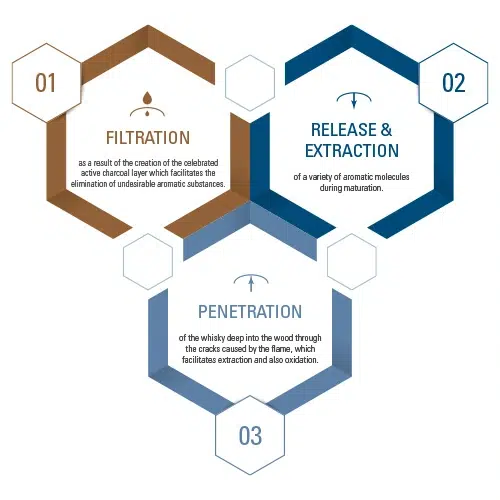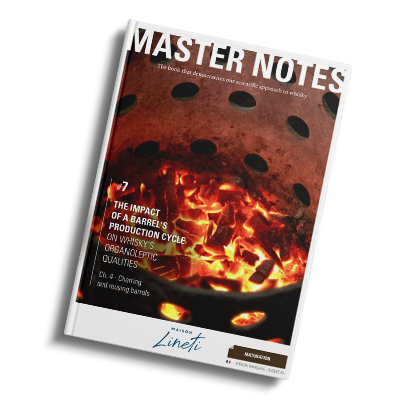What is the difference between toasting and charring?
When comparing toasting and charring, the main difference is the intensity of the heat applied to the barrel.
The temperature range for toasting varies between 110 and 230°C depending on the desired organoleptic profile, the heat of the flame is maintained during the process without burning the wood.
During charring however, the temperature is generally kept above 280°C. The barrel ignites, forming a layer of charcoal on the staves through the wood’s pyrolysis giving it a black and ashy appearance.







